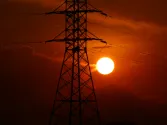Volume of transactions drives financial crime compliance costs
Manual intervention and regulatory complexity also contributes to compliance expenses.
The cost of financial crime compliance in APAC continues to climb, reaching tens of billions of dollars, driven primarily by transaction volumes. According to Rod Francis, Partner, Financial Services at Oliver Wyman, “the volumes of alerts that are produced are exponentially bigger purely because of size,” particularly in large markets like China.
During Sibos 2024 in Beijing, Francis highlighted that banks, such as ICBC, manage millions of clients, leading to increased compliance costs. “When we think about that in the context of a financial crime program… the size of the bank and the number of clients… has a knock-on effect in the context of resourcing.”
Manual intervention in risk management programs also contributes to rising costs. “Resourcing, in terms of the need to have manual intervention in your risk management programs, is a significant issue,” Francis explained.
Beyond volume, regulatory complexity across multiple jurisdictions further inflates compliance costs. “Asia markets… have multiple jurisdictions, multiple regulators, multiple regulatory requirements, which often do not provide standardisation, but actually the opposite,” he added.
While addressing these challenges, financial institutions are increasingly adopting AI to enhance efficiency, particularly in transaction monitoring. Francis noted, “We’re seeing AI being overlaid… to create even more levels of efficiency in the transaction monitoring space.”
Despite these advances, challenges like sanctions screening remain a pain point for banks. AI is expected to play a larger role in addressing these issues as institutions continue to invest in advanced technologies for risk management.


















 Advertise
Advertise








Commentary
The future of Asian banking isn’t ‘AI-first’ – it’s ‘fearless-first’
Why APAC banks must rethink their approach to the cost reduction challenge
Thailand backs major conglomerates for digital banks but risks stifling innovation